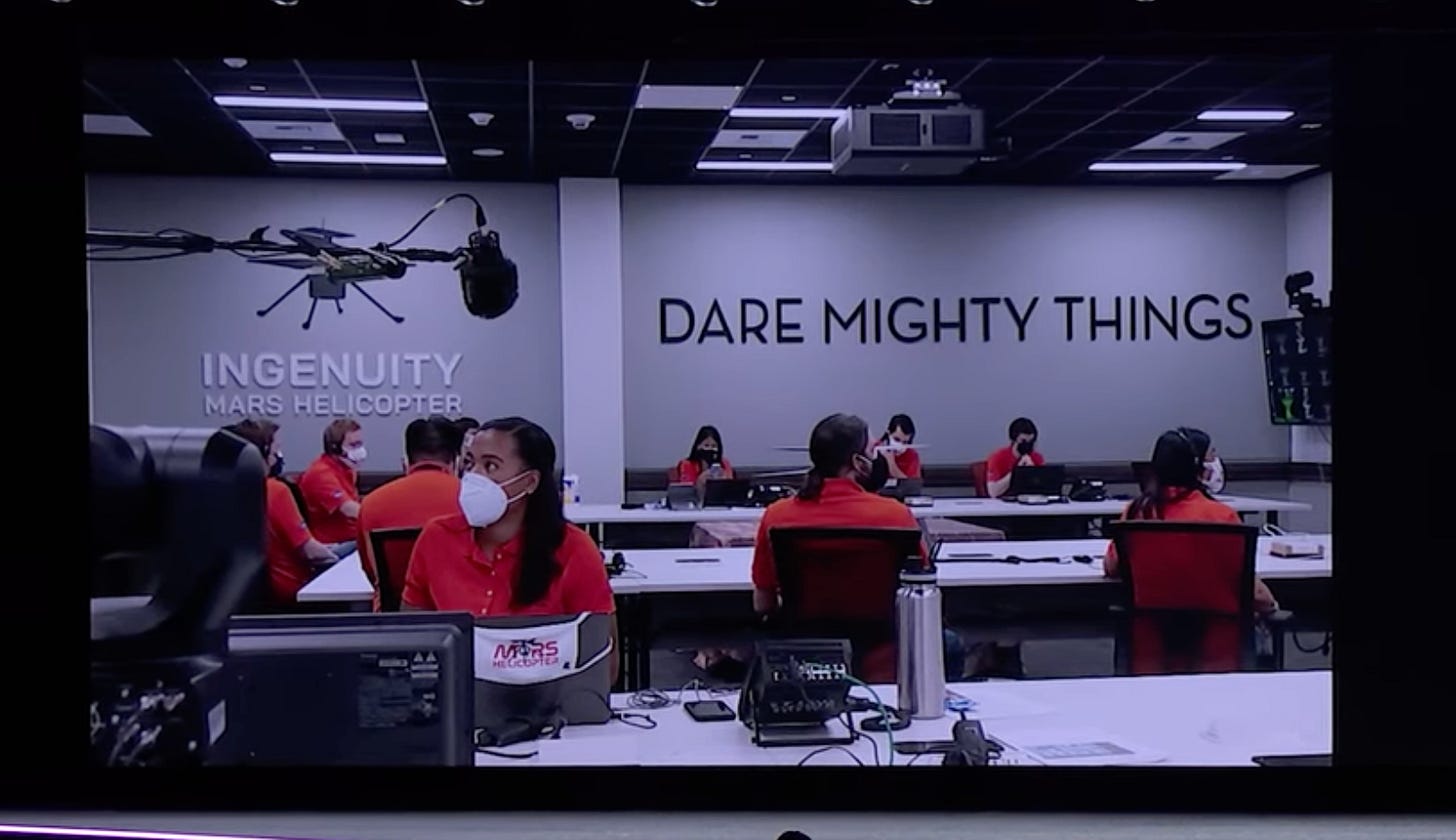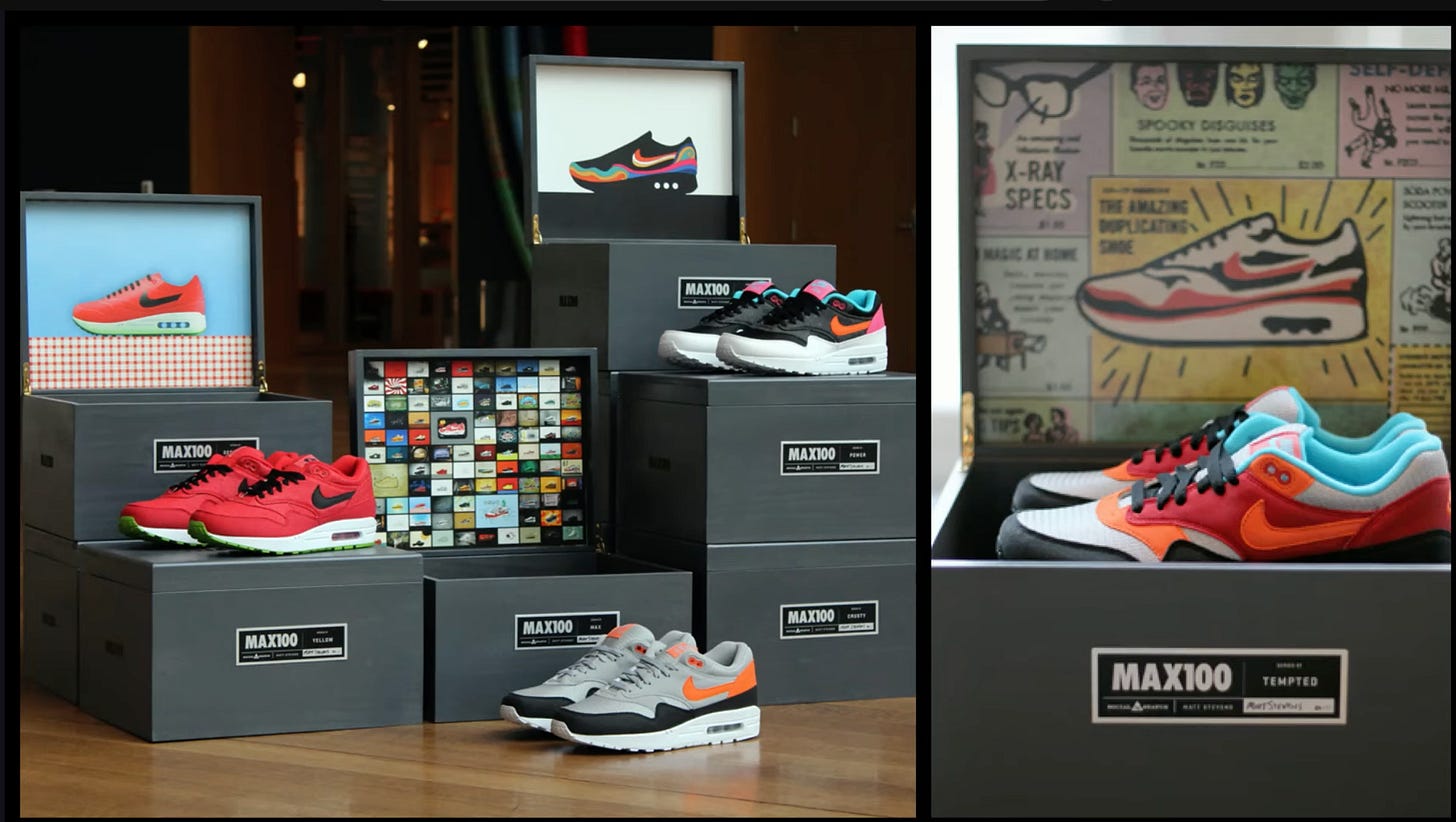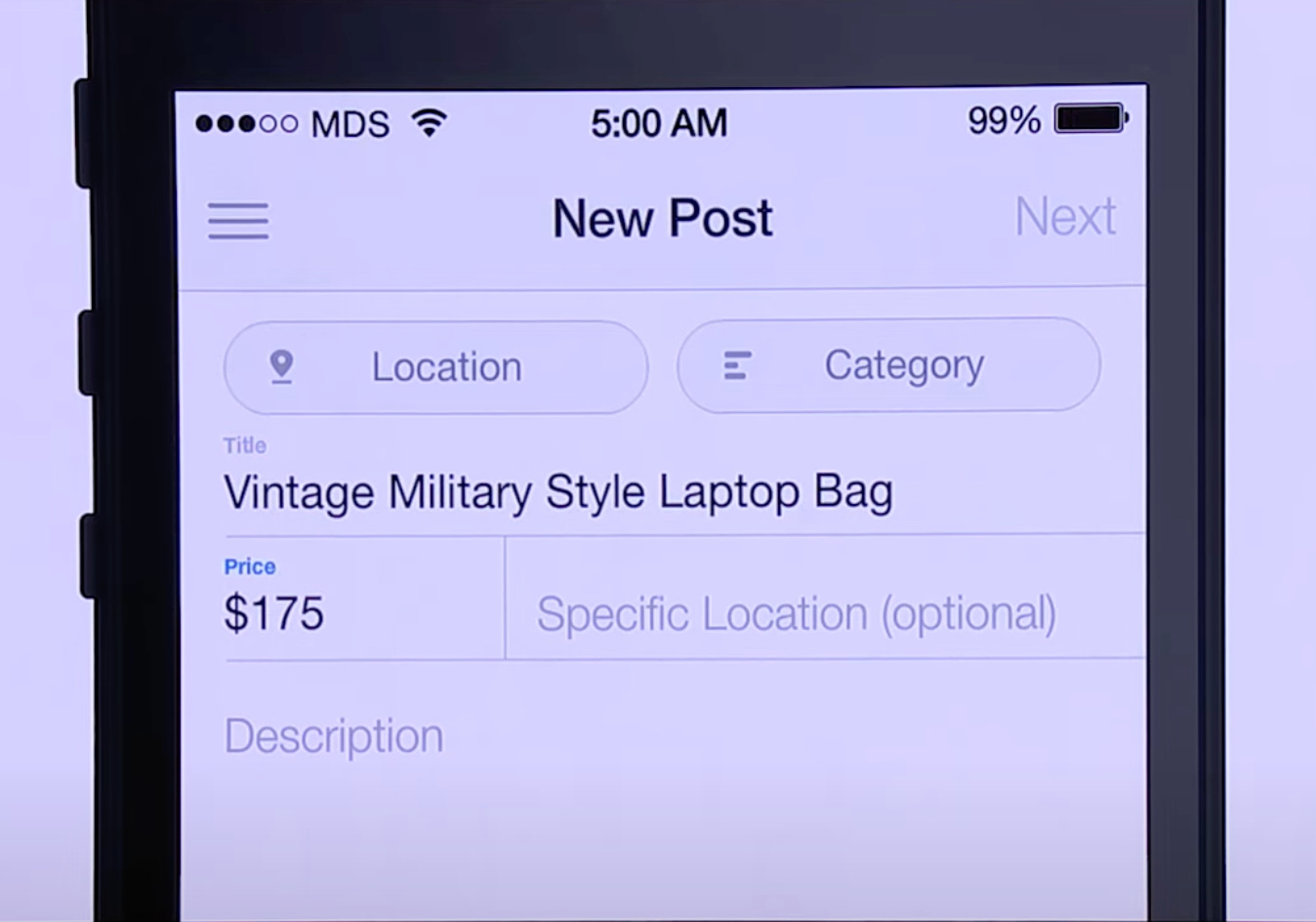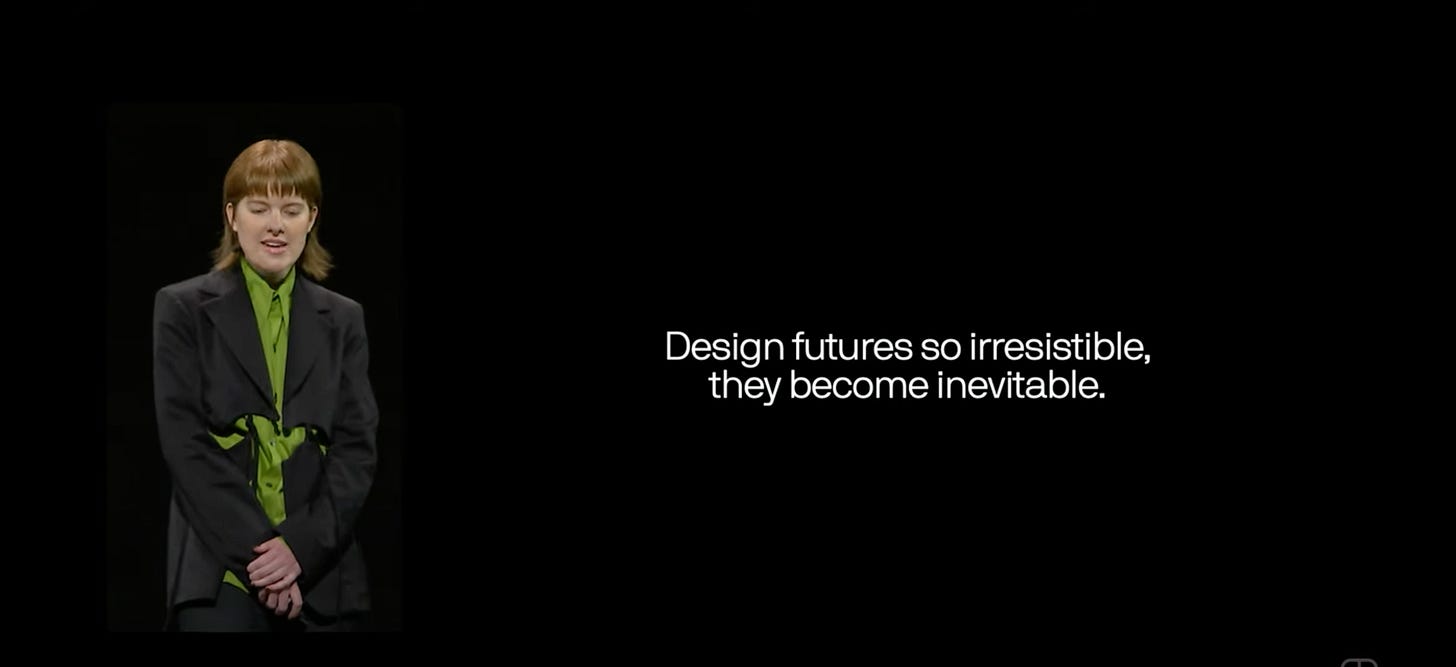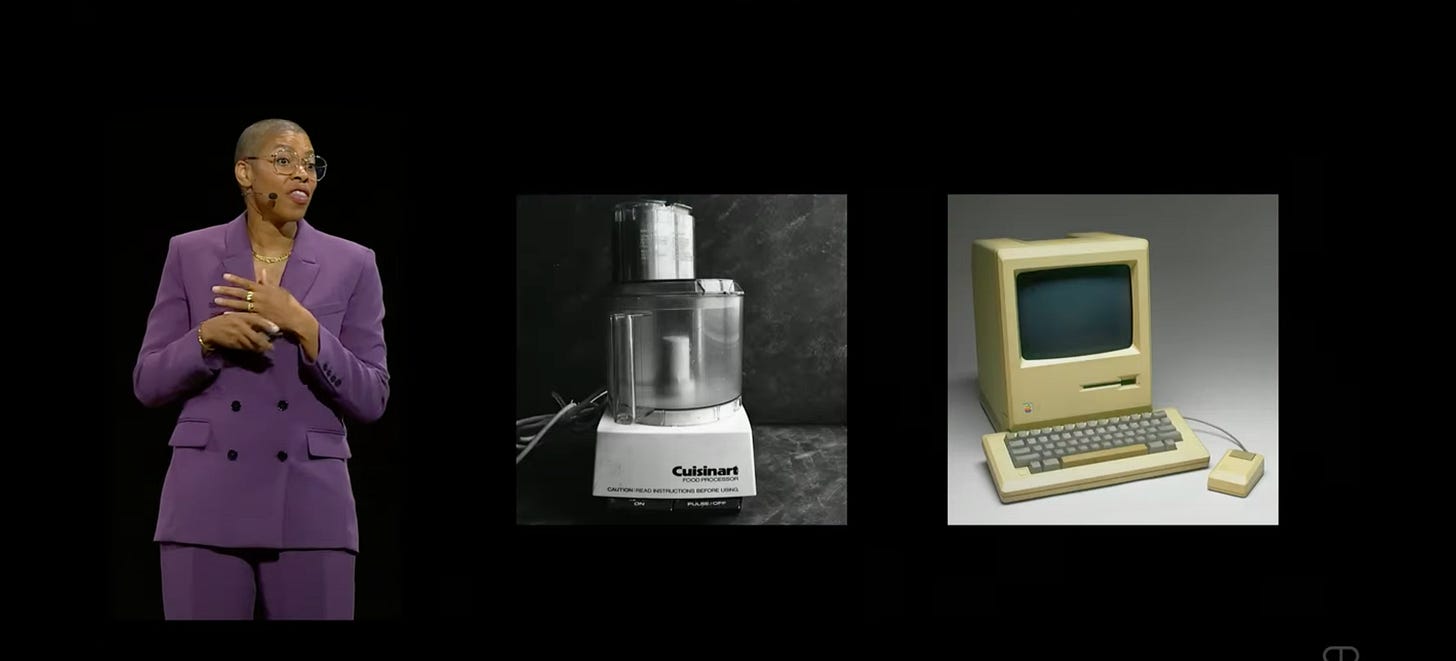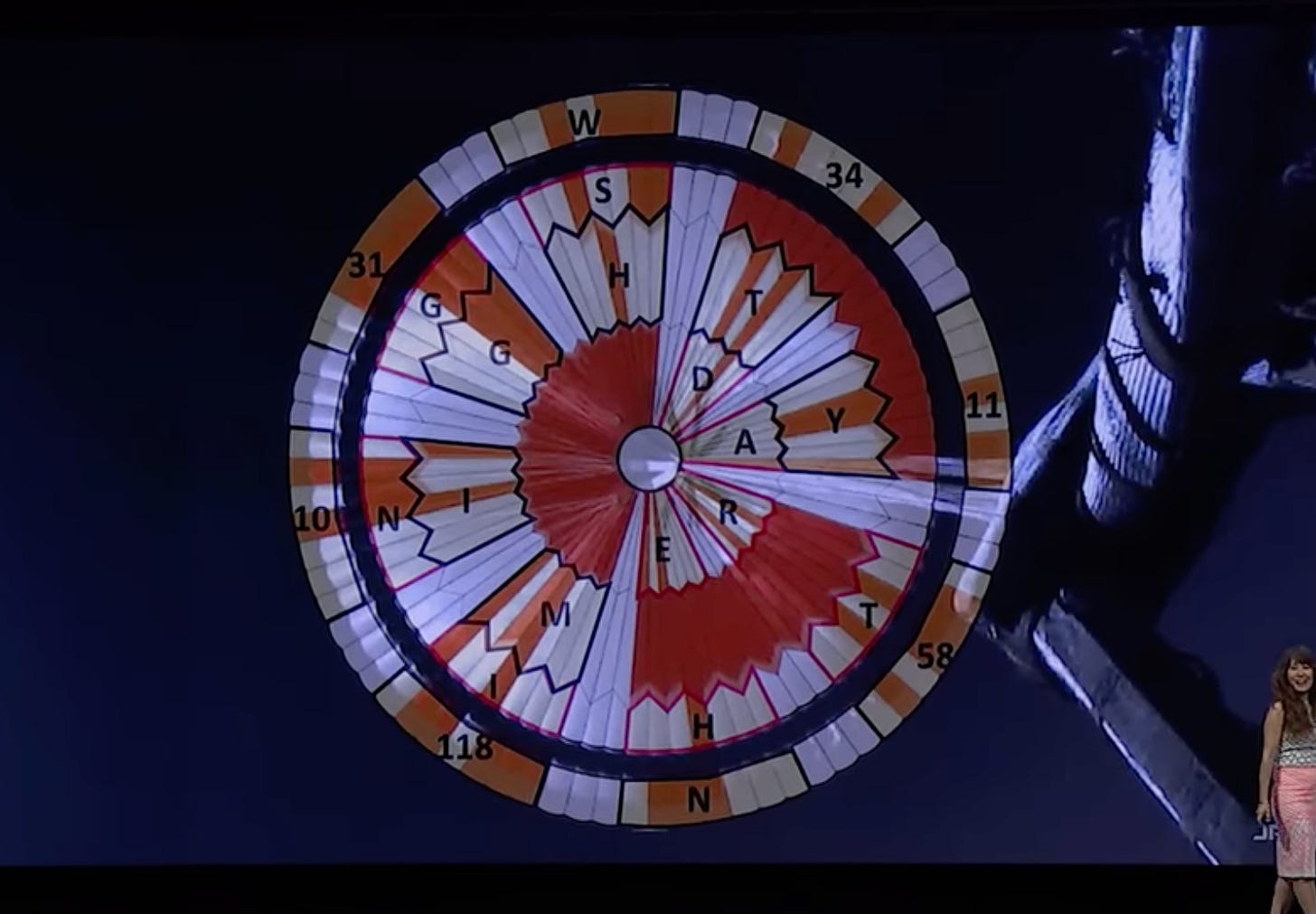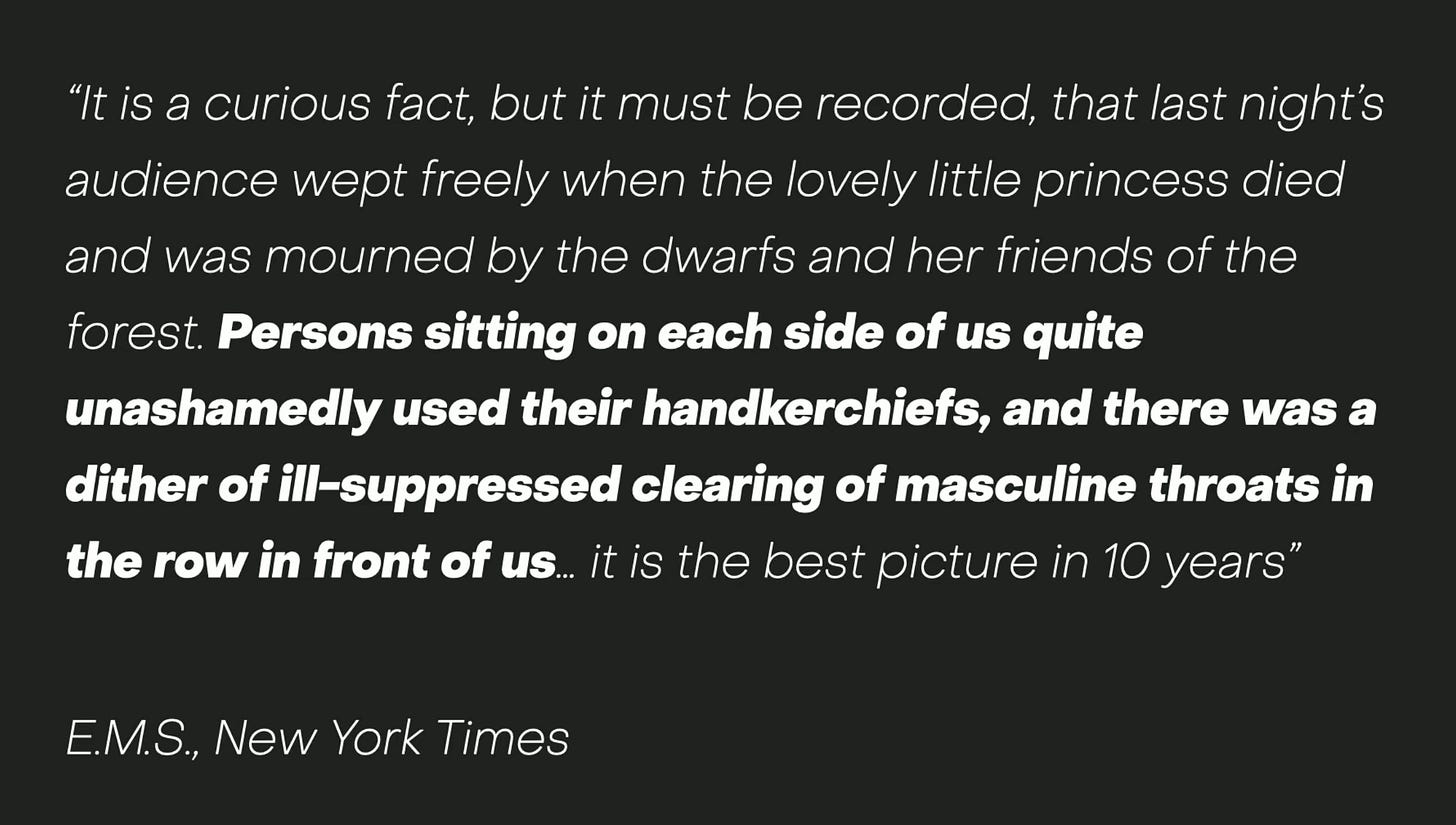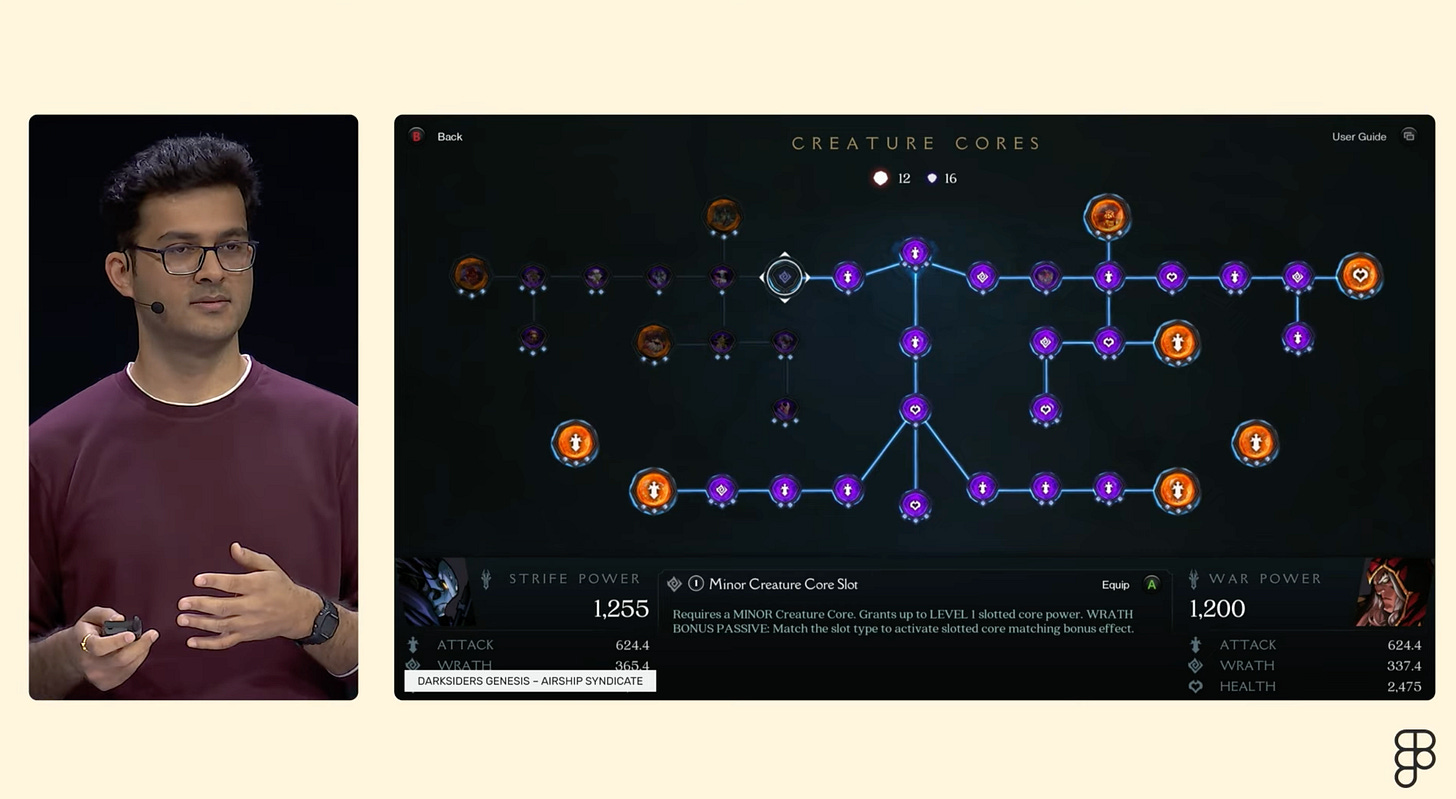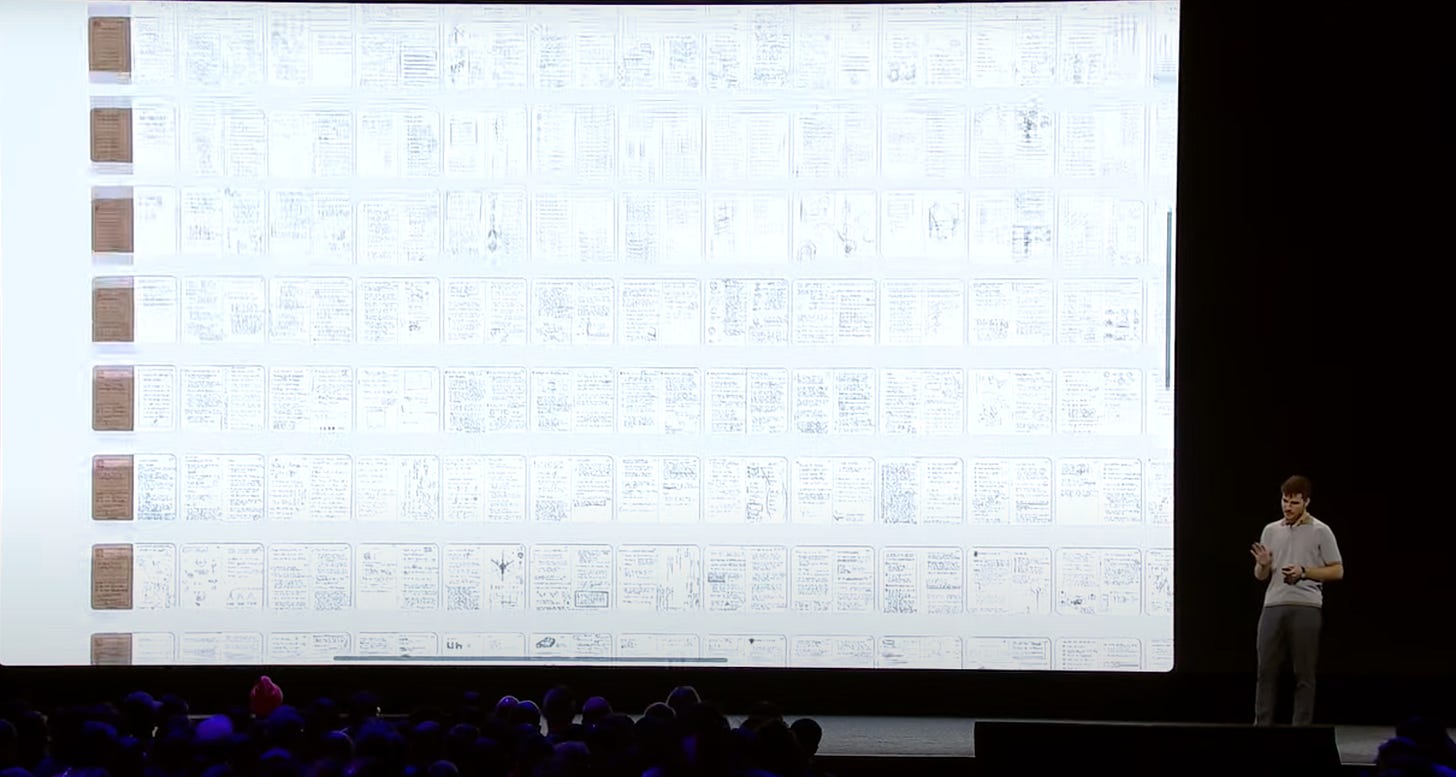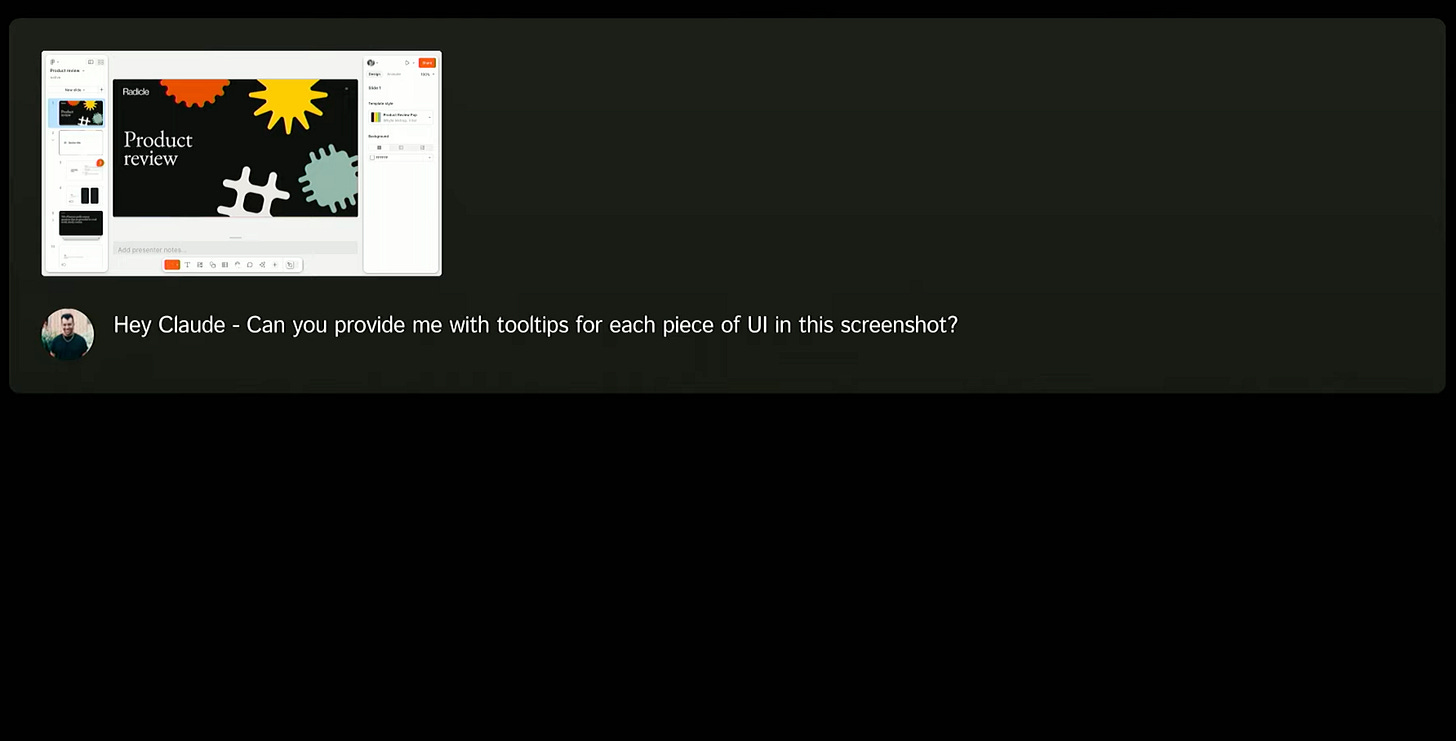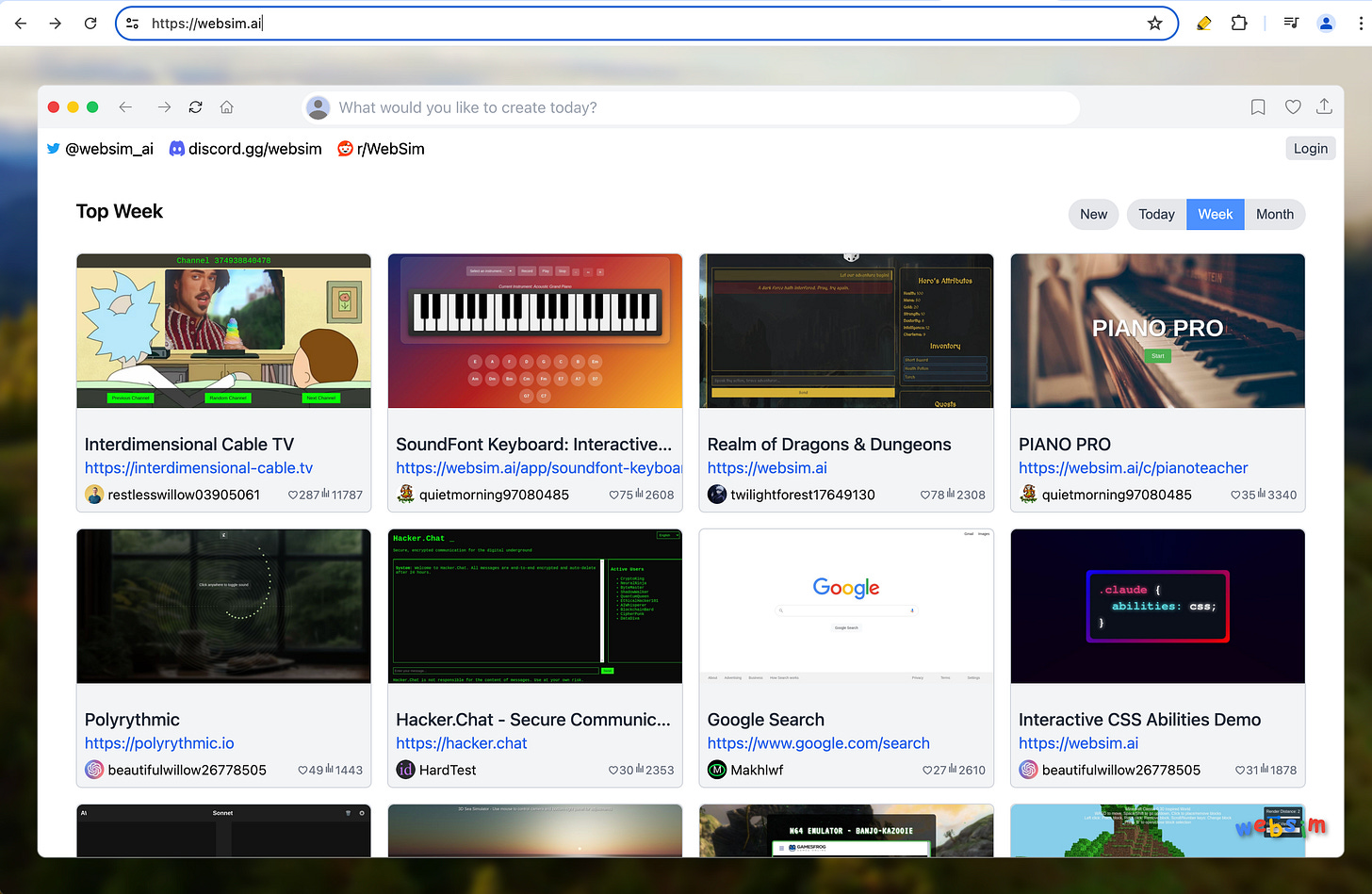14 Config talks I will rewatch
All the launches
The Figma team enjoyed every frame and every curve of everything they shipped! These launch videos are pretty fun.
An homage to computing. A reminder that computing is supposed to be magical. It’s easy to forget that in the middle of deadlines.
Figma Slides. Watch the video once for the feature and twice for the beautiful motion graphics x music on the cursor!
Figma AI. The ✨ continues to represent AI more and more in the new icons. Note to self to do a breakdown of how they are able to use AI so well in their use cases.
We’re going to try our best to show you
rather than tell you.
2. AI experiences
I wish I was working more closely on AI. I had a chance to work on it last year with a really capable team. It was exhilarating. Working on it feels like discovering new areas and possibilities every day. The boundaries are very blurry. Every use case sounds innovative. The state of the technology means we work much more closely with engineering because we’re prototyping the tech as much as the experience. These talks take me back to that feeling!
Dan Mejia, Figma. Love the story of Spikes. How they built Jambot in a few weeks - without any drop in quality. Complete with notches in the cards, and fun templates for onboarding. Then the story of Tone Dial - what a simple way to rewrite text without having to describe text. Constrained just enough for Interface use cases. I’m really curious how Rename Layers works. Note to self to investigate this later.
Margarita Popova, Replika. Love the simple but compelling examples of conversations. The counterintuitive insights on what natural conversations are like. The 1-10 scale of conversations people would pay to have vs not. Post update blues of Replikas. Ratio of conversations that make people better as the guiding metric. However, the talk hyped up Replika’s experience a bit more than I found it to be on using the app. Still an interesting talk.
Figma AI Features deep-dive. Great examples of narrowing down use cases and great quality implementation of each feature. Can’t wait to see if the actual product stands up to the variety of real-life use cases.
Work forward from technical progress.
Work backwards from the future.
3. Focus on the Product
The only thing that matters in the end is how performant the product is. Everything else is in service of it. The org structure, project management, documentation, and communication. None of these by themselves are of any use. They enable quality and speed to coexist which is the only way to build great products. (This is one of fav topics. More on this in a future article!)
Nan Yu, Linear—His simple opinion is that when we know we tend to ship org charts, why are we designing org charts at all? Why not have the org chart reflect the product we want to build instead? And get all the good focus from it without any of the artificial constraints. His undertone of annoyance, I just love!
Peter Yang, Roblox—Many small insights. On using friction logs to record feedback. The essence of strategy is the ability to prioritise quality and speed over scope. That growth starts with executing, then identifying the solution for a given problem and then to be able to pick the right problems.
Zulhilmi, Open Government Projects—What is this amount of effectiveness! That too in government. He’s also just a really fun presenter. The UI is so.. almost basic.. yet so well done. The illustration style too - simple but characteristic. The all-January hackathons every year. The Policy Officer's role in small teams. And the impact of radical transparency of their ops. Very inspiring.
Dylan, Figma. It’s easy to make simple things complex. The hard part is adding functionality while managing complexity. Having to always pick 2 of 3 from “features, velocity, quality.“ And fanboying over Tim Van Damme, to getting feedback on Figma from him, to bringing him in to design icons for UI3. Lenny, always the capable interviewer.
Nobody goes back and says “Great job on the budget or deadline.”
It matters only what you build.
4. Side projects
This has always been a tricky one for me. I’m much better at focus than at multi-tasking. Focus is my way of multi-tasking. Having a side project challenges focus for me head-on. But it’s something I’ve been working to get better at. This newsletter is my small attempt at it. These talks give me a whole lot of inspiration to do more of it. Even the storytelling is so fun!
Michael Di Genova, Work Louder—The story of two people meeting over the internet compelled to build something that was just conceptual because one Instagram post created a bit too much demand to ignore. What! And that led them to work with Ben Fryc (featured next). Too good a story, also told well.
Ben Fryc, Wealthsimple—What a fun presentation! Every slide is spinning in 3D. Fantastic storytelling with just the right amount of technical detail. It’s a beautiful behind-the-curtain of what goes into mastering a craft. Every design team needs a person like this to push the bar higher consistently. Stare all day at his first side project, Abstractions
Josh Wardle, Wordle—A perfect example of being sincere, not serious about every part of the process. From the idea, to shelving it, to selling it. Sometimes things work out even when everything is done “wrong.“ Maybe even because of it.
Jhey Tompkins, Vercel. No words. Just watch.
Inspiration exists, but it has to find you working.
Other things that caught my eye
A quick note on Quality
Quality, velocity and focus are the trifecta of great products and companies. Many speakers mentioned quality. But still in an abstract manner. What does it even mean? How do you measure it? How do you explain it to a team? These are questions I try to answer every week with my teams. Haven’t found the points on this entirely helpful yet. A good topic to dive into here at a future time.
